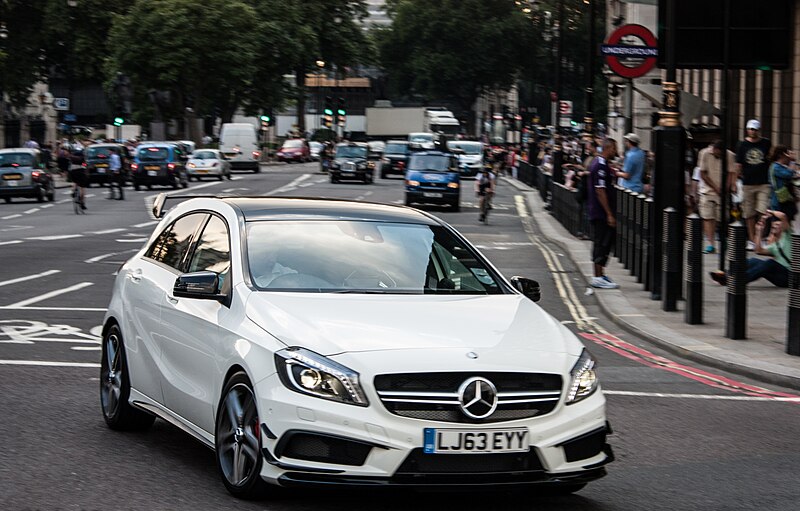 |
| Source: TTTNIS via Wikimedia Commons CC0 1.0
Small displacement turbocharged 4 cylinder engine is becoming a popular choice in hot hatch. Combining the power of turbocharger with the simplicity of having just 4 cylinders has got to be a boon in the age where meeting emission standard is a necessary evil, but without compromising the thirst for out-and-out performance that enthusiasts (including myself) crave.
Hence, why turbo 4 pot pocket rocket such as the Peugeot 208 GTi (200 hp), Ford Fiesta ST (180 hp), Ford Focus RS (350 hp) and Renault Megane RS (275 hp if you fancy the potent 275 Trophy-R) exist. However, none of the engines in the above-mentioned hot hatch hold a candle to the M133 engine found in the bonnet of a 3-pointed star hot hatch, namely the Mercedes AMG A45.
|
 | ||
| Source: Digital-Designs via Wikimedia Commons CC BY 2.0
It all began...
Assembled by hand in Kolleda, Germany, the engine is based on the M270, with knowledge gained from the M156 (6.3 litre NA V8) and M157 (5.5 litre twin turbo V8) integrated into the M133. AMG reckoned that fitting the M270 in their ultimate hot hatch would stifle its credential, as in stock form it only made 208 hp. Not good. So, since 2013 AMG worked its magic to conceive the M133, claimed to be the world's most powerful production 4 cylinder engine.
The M133 2.0 litre twin-scroll turbo 4 pot dished out 355 hp in its initial guise thanks to its spray-guided direct injection with piezo injectors, 83 mm x 92 mm bore and stroke, 8.6:1 compression ratio and mind-blowing 1.8 bar of boost pressure ramming itself into the 4 NANOSLIDE-coated cylinders.
In case you're wondering what on earth is NANOSLIDE, it's basically a cylinder wall coating technique of spraying nano-crystalline iron coating into the cylinder wall of an aluminium block. This result in wear-resistant and low-friction surface that further eases the piston's up and down motion, freeing even more power from the already potent engine as a result from the reduction in internal friction losses. Plus, it helps cut weight as it negates the need for heavy cast iron cylinder liners that have been the standard approach in protecting aluminium cylinder block from being worn down by the piston's friction.
Furthering the weight reduction regime is the all-aluminium crankcase, forged steel crankshaft and forged pistons with friction-optimised piston rings. Together with NANOSLIDE, this enables the M133 to tip the scale at just 148 kg! Keeping the charged air cool is the air-to-water intercooler which according to AMG, utilises its own coolant circuit. On top of that, AMG also claimed this helps keep the charged air temperature down at an impressive 130°C! A45's party spoiled...or is it?
|

No comments :
Post a Comment